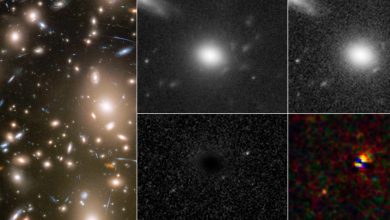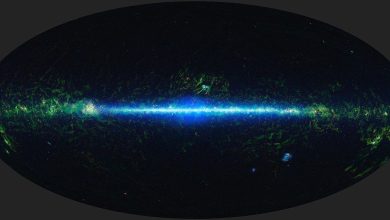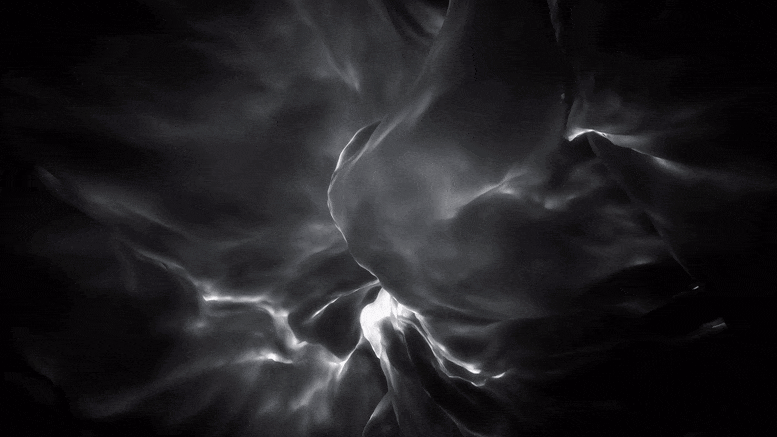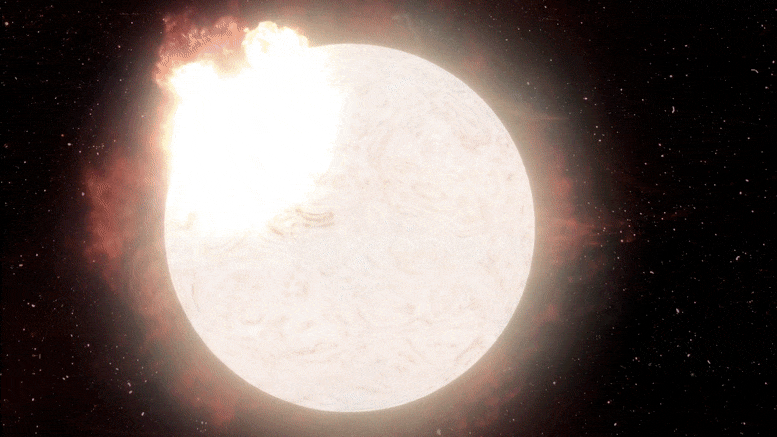
An artist’s rendition of a red supergiant star transitioning into a Type II supernova, emitting a violent eruption of radiation and gas on its dying breath before collapsing and exploding. Credit: W. M. Keck Observatory/Adam Makarenko
It’s another first for astronomy.
For the first time, a team of astronomers have imaged in real-time as a red supergiant star reached the end of its life. They watched as the star convulsed in its death throes before finally exploding as a supernova.
And their observations contradict previous thinking into how red supergiants behave before they blow up.
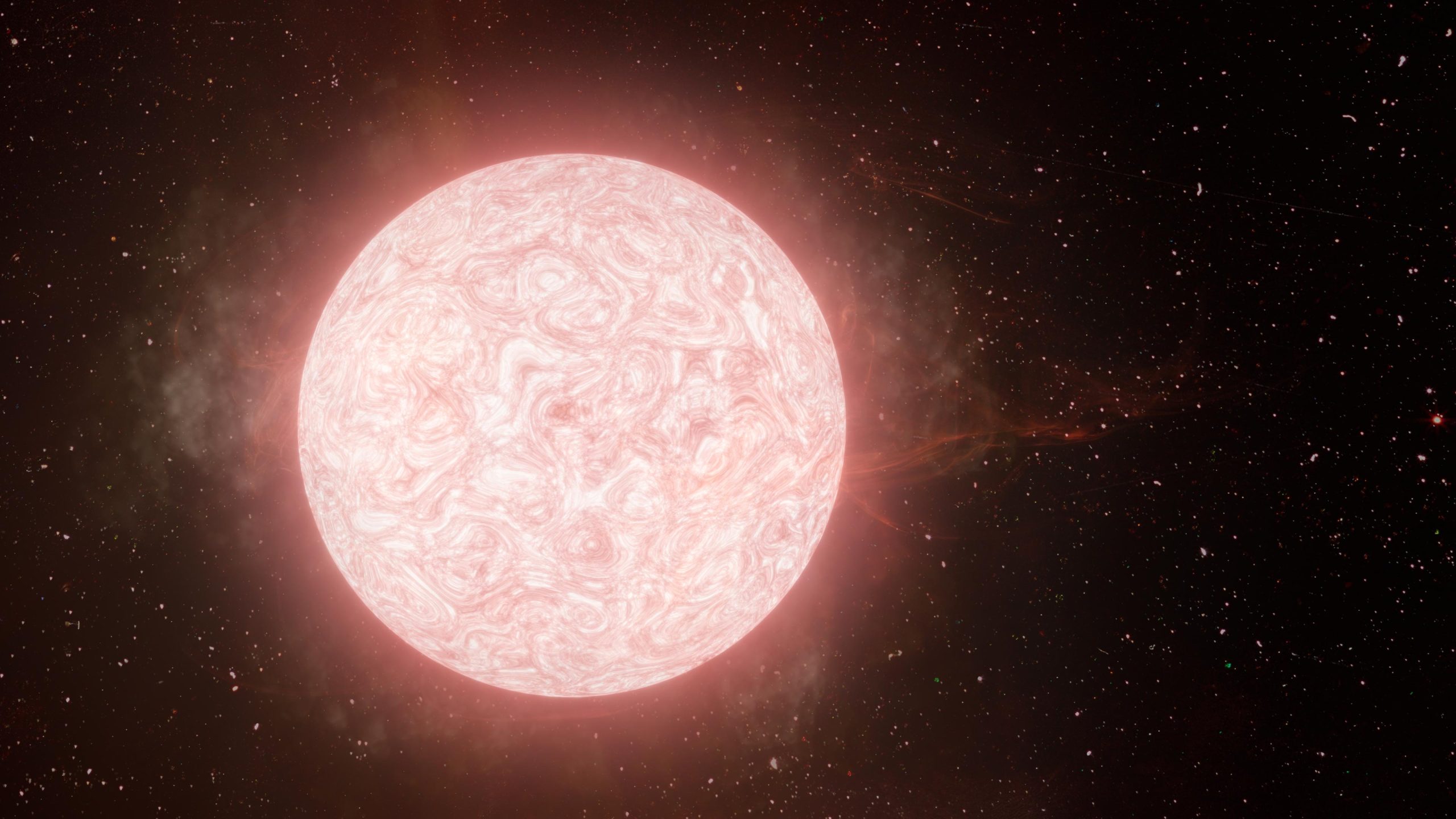
A team of astronomers watched the drama unfold through the eyes of two observatories in Hawaii: Pan-STARRS on Haleakala, Maui, and the W. M. Keck Observatory on Maunakea, Hawaii Island. Their observations were part of the Young Supernova Experiment (YSE) transient survey. They watched the supernova explosion, named SN 2020tlf, during the final 130 days leading up to its detonation.
“For the first time, we watched a red supergiant star explode!”
— Wynn Jacobson-Galán, UC Berkeley
The title of the paper presenting the discovery is “Final Moments. I. Precursor Emission, Envelope Inflation, and Enhanced Mass Loss Preceding the Luminous Type II Supernova 2020tlf.” The paper is published in The Astrophysical Journal and the lead author is Wynn Jacobson-Galán, an NSF Graduate Research Fellow at UC Berkeley.
“This is a breakthrough in our understanding of what massive stars do moments before they die,” said Jacobson-Galán, in a press release. “Direct detection of pre-supernova activity in a red supergiant star has never been observed before in an ordinary Type II supernova. For the first time, we watched a red supergiant star explode!”
“It’s like watching a ticking time-bomb.”
— Raffaella Margutti, UC Berkeley
The discovery dates back to the Summer of 2020. At that time, the progenitor star experienced a dramatic rise in luminosity. Pan-STARRS detected that brightening, and when Fall came around the star exploded as SN 2020tlf. The supernova is a Type II supernova, where a massive star experiences a rapid collapse and then explodes.
This video is an artist’s rendition of the red supergiant star transitioning into a Type II supernova, emitting a violent eruption of radiation and gas on its dying breath before collapsing and exploding. Credit: W. M. Keck Observatory/Adam Makarenko
The team used the Keck Observatory’s Low-Resolution Imaging Spectrometer (LRIS) to capture the supernova’s first spectrum. The LRIS data showed circumstellar material around the star when it exploded. That material is likely what Pan-STARRS saw the star ejecting in the summer before it exploded.
“Keck was instrumental in providing direct evidence of a massive star transitioning into a supernova explosion,” said senior author Raffaella Margutti, an associate professor of astronomy at UC Berkeley. “It’s like watching a ticking time bomb. We’ve never confirmed such violent activity in a dying red supergiant star where we see it produce such a luminous emission, then collapse and combust, until now.”
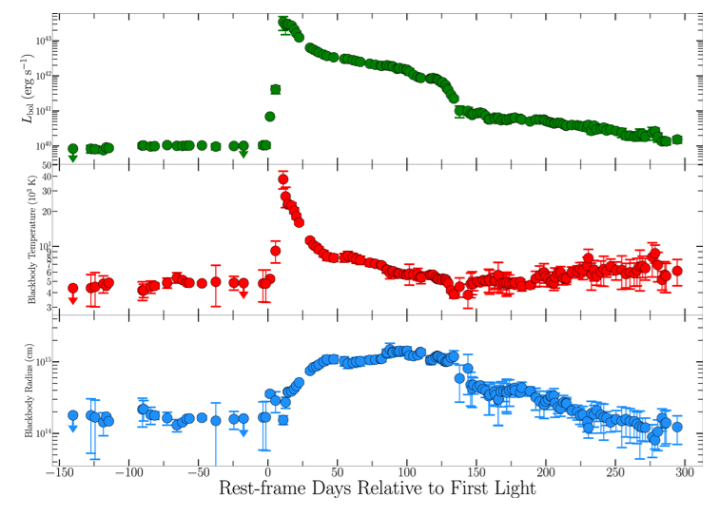
After the explosion, the team turned to other Keck instruments to continue their observations. Data from the DEep Imaging and Multi-Object Spectrograph (DEIMOS) and Near Infrared Echellette Spectrograph (NIRES) showed that the progenitor star was 10 times more massive than the Sun. The star is in the NGC 5731 galaxy about 120 million light-years away.
The team’s observations led to some new insight into Type II supernovae and their progenitor stars. Prior to these observations, nobody had seen a red supergiant display such a spike in luminosity and undergo such powerful eruptions before exploding. They were much more placid in their final days as if they accepted their fates.
Red supergiant stars eject material prior to core collapse. But that material ejection takes place on much longer timescales than SN 2020tlf. This supernova emitted circumstellar material (CSM) for 130 days prior to collapse, and that makes it a bit of a puzzle. The bright flash prior to the star’s explosion is somehow related to the ejected CSM, but the team of researchers isn’t certain how they all interacted.
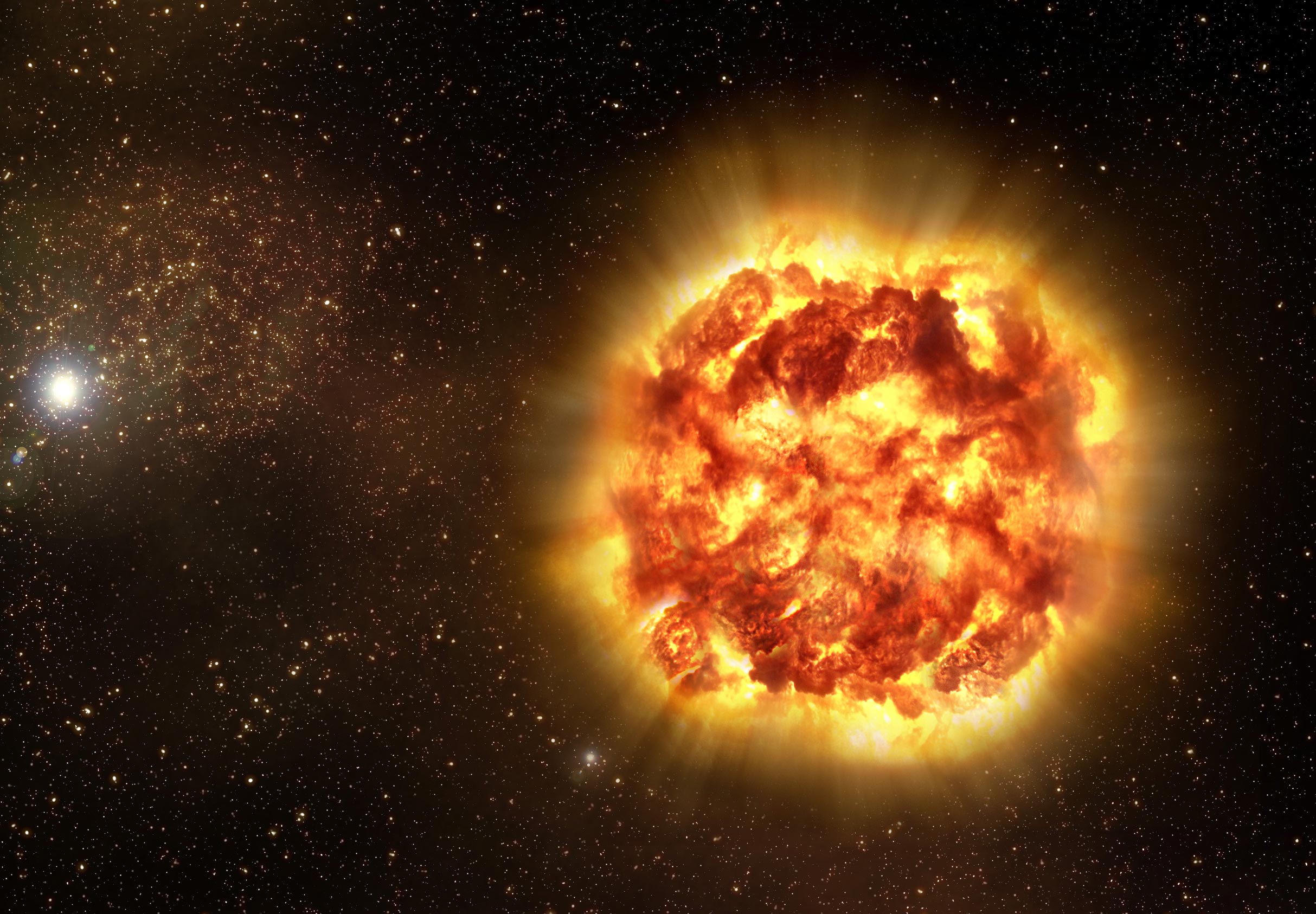
The significant variability in the star leading up to collapse is puzzling. The powerful burst of light coming from the star prior to exploding suggests that something unknown happens in its internal structure. Whatever those changes are, they result in a mammoth ejection of gas before the star collapsed and exploded.
In their paper, the authors discuss what may have caused the ejection of gas. One possibility is wave-driven mass loss, which occurs in the late stages of stellar evolution. It occurs when the “… excitation of gravitational waves by oxygen or neon burning in the final years before SN can allow for the injection of energy into the outer stellar layers, resulting in an inflated envelope and/or eruptive mass-loss episodes,” they write. But current wave-driven models don’t match the progenitor star’s ejection of gas. They’re consistent with the progenitor star’s radius in its last 130 days, but not consistent with the burst of luminosity.
In the conclusion of their paper, the authors sum things up succinctly. “Given the progenitor mass range derived from nebular spectra, it is likely that the enhanced mass loss and precursor emission are the results of instabilities deeply rooted in the stellar interior, most likely associated with the final nuclear burning stages. Energy deposition from either gravitational waves generated in neon/oxygen burning stages or a silicon flash in the progenitor’s final ?130 days could have ejected stellar material that was then detected in both pre-explosion flux and the early-time SN spectrum.”
If there’s one supernova that behaves like this, there must be more. The team’s findings mean that surveys like the Young Supernova Experiment transient survey now have a way to find more of them in the future. If the survey finds more stars ejecting material like this one, then they know to keep an eye on it to see if it collapses and explodes.
“I am most excited by all of the new ‘unknowns’ that have been unlocked by this discovery,” said Jacobson-Galán. “Detecting more events like SN 2020tlf will dramatically impact how we define the final months of stellar evolution, uniting observers and theorists in the quest to solve the mystery of how massive stars spend the final moments of their lives.”
Originally published on Universe Today.


